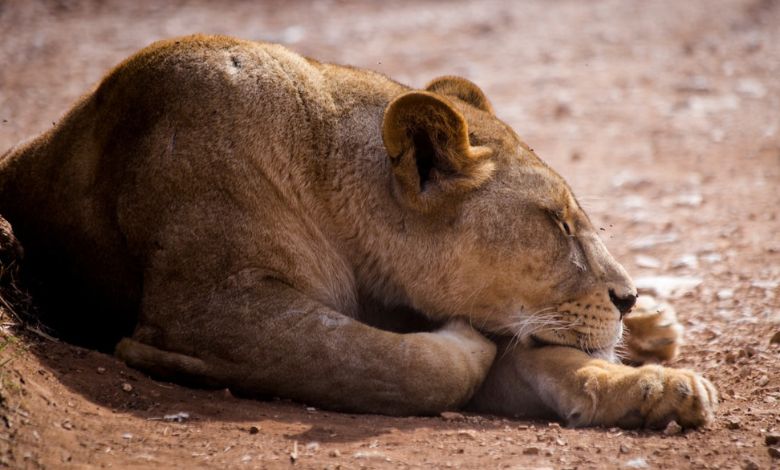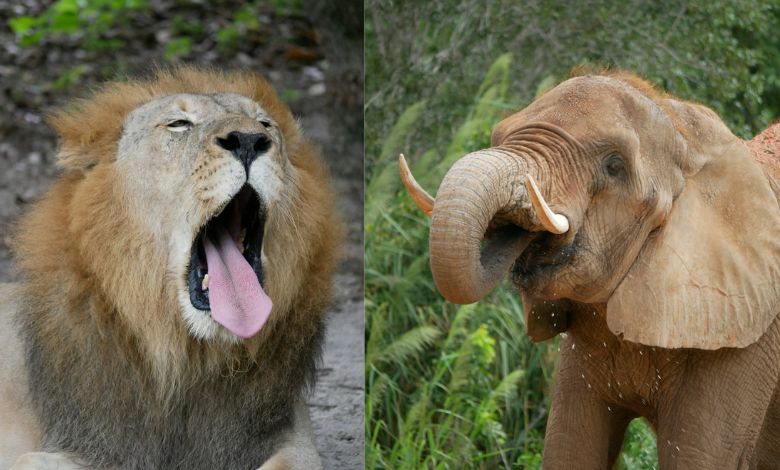Learn what macromolecules provide energy for lions and elephants, fueling their speed, strength, and survival in the wild.
Have you ever been enjoying a hearty meal and wondered how animals in the wild power themselves up? As a big fan of biology and wildlife, I think about this all the time. What gives a lion the speed and energy to chase down its prey? And how does an elephant fuel its massive body as it roams across the savannah?
The answer is macromolecules, essential building blocks of energy. By understanding how they work, we can uncover the amazing ways animals are adapted to survive and appreciate the delicate balance of nature. Just like digital workplace productivity fuels human efficiency in modern life, these macromolecules power animals in their natural world.
So, pour yourself a coffee or grab a snack, and let’s dig into the science behind how lions and elephants stay energized, with a few stories and examples to make it fun.
Article Breakdown
The Lion’s Energy Source – A Carnivore’s Diet

Proteins and Fats: The Lifeblood of a Predator
Imagine a lion stalking its prey in the African grasslands. Every step is calculated, every muscle taut with anticipation. This intense energy demand is met primarily by the proteins and fats found in its diet of zebras, antelopes, and other herbivores.
Proteins: Building and Fueling the Beast
Lions thrive on protein. When they consume a meal, their digestive system breaks down proteins into amino acids, the building blocks of life. These amino acids are absorbed into the bloodstream and used to repair tissues, maintain muscle mass, and, most importantly, provide energy.
Here’s the kicker: when lions go through periods without food, they rely on a process called gluconeogenesis. This fancy term means they convert amino acids into glucose, a quick energy source. Think of it like dipping into your savings account when your paycheck is delayed. It’s not ideal, but it keeps you going.
Fats: The Energy Reservoir
Fats are another crucial macromolecule in a lion’s diet. When lions devour their prey, they ingest large amounts of fat, which is metabolized into fatty acids and glycerol. These fatty acids undergo β-oxidation (a complex biochemical process) to produce energy in the form of ATP, the cellular currency for life.
A lion’s fat reserves act like a backup generator. During times when food is scarce, they tap into these reserves to sustain their energy levels. It’s like having a power bank for your phone, essential for survival when you’re off the grid.
When I first learned about the efficiency of fat metabolism in lions, I couldn’t help but think about my own experience during a hike. I’d skipped breakfast (bad idea!) and ended up relying on the energy from a protein bar I’d packed. It made me appreciate how lions survive on such sporadic meals, often going days without eating but still remaining the kings of the savannah.
The Elephant’s Energy Source – A Herbivore’s Feast
Carbohydrates: Fuel for the Gentle Giant
Now let’s shift gears to elephants. Picture a majestic elephant leisurely grazing on tall grasses and shrubs. Their diets couldn’t be more different from a lion’s, yet they’re equally specialized to sustain their massive bodies.
Carbohydrates: The Power Player
Elephants consume vast amounts of plant material, we’re talking up to 300 pounds a day! Their diet is rich in complex carbohydrates, particularly cellulose. Unlike us, elephants can digest this tough fiber thanks to a massive fermentation chamber in their digestive system.
Here’s how it works: their large cecum and colon host trillions of microbes that break down cellulose into volatile fatty acids (VFAs). These VFAs are absorbed into the bloodstream and converted into energy, fueling their daily activities.
Think of it like a slow-cooking stew. The fermentation process takes time, but it extracts every bit of energy from the fibrous plants they eat.
Proteins and Fats: Supporting Roles
While carbohydrates dominate, elephants also get small amounts of proteins and fats from their diet. These macromolecules play a supporting role, aiding in cell repair and overall maintenance. However, their contribution to energy is minimal compared to the power-packed VFAs derived from cellulose.
Example
If you’ve ever tried juicing kale or spinach, you’ll know how fibrous these greens are. Now imagine an elephant’s digestive system acting like an industrial-strength juicer, extracting energy from every fiber. It’s a system built for efficiency!
On a visit to a wildlife sanctuary, I watched elephants munch on branches and bark with what seemed like unending appetite. A guide explained how their energy needs dictate their constant feeding. That’s when it clicked for me: elephants don’t just eat for pleasure, their survival depends on it.
Unique Adaptations and Survival Strategies
Metabolic Marvels of Lions and Elephants
Both lions and elephants are evolutionary masterpieces, each adapted to thrive in their respective niches. Let’s take a closer look at their survival strategies:
Lions: Masters of Metabolic Efficiency
When prey is scarce, lions rely on their fat reserves. This metabolic flexibility allows them to endure periods of fasting without compromising their hunting prowess. It’s as if their bodies are programmed to switch to energy-saving mode, conserving resources until the next meal.
Elephants: Champions of Fermentation
Elephants, on the other hand, have turned plant digestion into an art form. Their ability to ferment and break down cellulose ensures they extract maximum energy from a diet that many other animals couldn’t survive on. It’s a testament to the adaptability of herbivores in nutrient-scarce environments.
| Feature | Lions | Elephants |
|---|---|---|
| Primary Energy Source | Proteins and Fats | Carbohydrates |
| Digestive System | Simple, optimized for meat digestion | Complex, designed for fermentation |
| Survival Strategy | Reliance on fat reserves | Constant grazing |
Key Takings
- From the ferocious lion’s protein-packed meals to the gentle elephant’s fibrous feasts, nature has crafted energy systems perfectly suited to their needs.
- Lions showcase metabolic efficiency and resilience, while elephants demonstrate the power of slow, steady energy extraction.
- Reflecting on these adaptations has deepened my appreciation for the natural world.
- It’s a reminder of how every creature, from predator to herbivore, plays a vital role in maintaining ecological balance.
- So, the next time you see a lion lounging under a tree or an elephant grazing in the wild, you’ll know exactly what fuels their incredible lives.
Useful Articles:
Nutritional Requirements of a Lion: A deep dive into the dietary needs of lions, highlighting their dependence on proteins and fats for survival and energy.
Metabolic Health Assessment of Zoo Elephants: An insightful study on the metabolic processes in elephants, exploring how their diet and digestion support their immense energy requirements.



